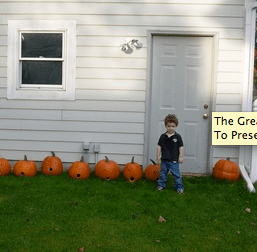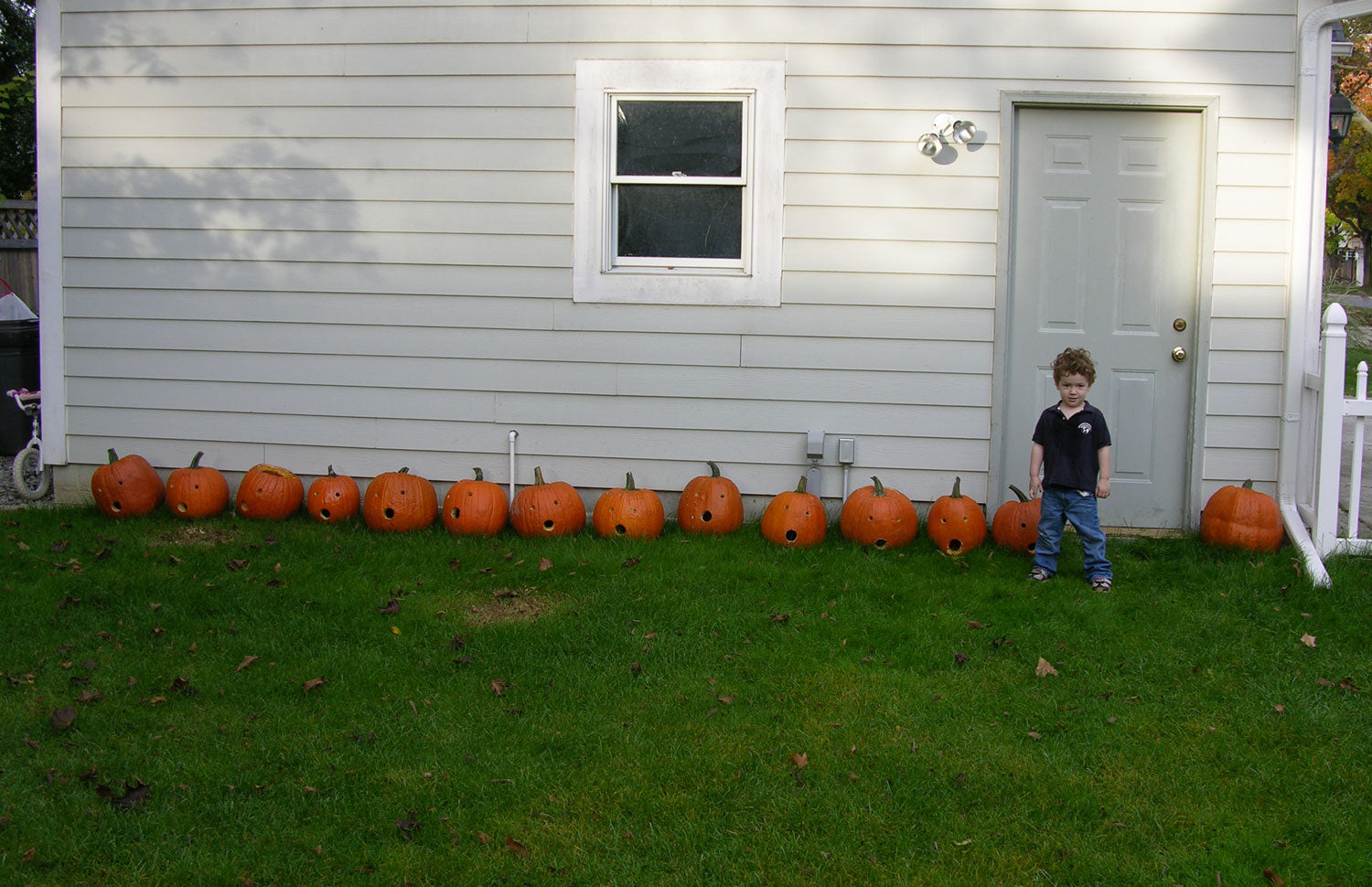Pumpkin Preservation

I've read a few websites that said you should coat the cut surface with Vaseline or you can use something called "Pumpkin Preserver" that you buy at the halloween store.
I doubt it will surprise you if I told you I don't do either of those things.
For one thing, I hope to get through my entire life without covering anything with Vaseline. Second, I am not making a special trip to a store for something called Pumpkin Preserver. I don't have time for that crap.
In 2008, I cut 14 pumpkins exactly the same way and used a different preservative on each one. Why? In the name of science! Actually, I did so because people want to know what works well and honestly, I couldn't find out without my little experiment.
The Answer? Bathroom Cleaner with Bleach. You could probably use any cleaner with bleach in it, but I used Chlorox Clean-Up in the experiment and it worked really well. I've since tried Tilex and also the dollar-store brand and they all work.
So, I suggest you go into the cleaner cabinet as soon as you are done carving and spray away. I spray all of the cut surfaces as well as the entire insides. Don't forget to do the underside of your pumpkin's cap, it doesn't get a free pass.
This one application seemed to increase the shelf-life of your pumpkin by 100%, all for just one spraying. I suppose you could do even better if you sprayed it every few days, but I didn't. After all, it's time on earth is fleeting.
If you want to make your pumpkin last for a really long time and cost is no object, you can pickle it. Submerge the entire pumpkin in white vinegar. Some folks use a fish tank, but I use a clear bucket from the restaurant supply store. A pumpkin submerged in vinegar seems to last for months, but the cost of vinegar can easily outstrip the cost of your pumpkin.
If you want to read the entire results of the study, as if I would falsify the final conclusion, read the next page. It has all of the hard data that the truly nerdy really crave.

